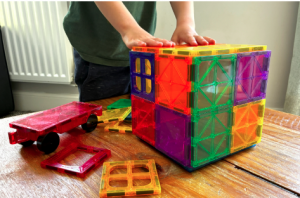Did you know that magnetic toys can be dangerous?
Doctors warn of magnetic toy dangers as study reveals hundreds of children hospitalised
The study, by the University of Southampton, is the first to investigate how many children under the age of 16 in the UK have been affected.
Lead author Professor of Paediatric Surgery Nigel Hall , who works at the University and Southampton Children’s Hospital, said retailers must do more to increase warnings on magnetic toy labels.
He added: “Our study reveals that 300 children and young people are being hospitalised each year in the UK after ingesting magnets.
More than two in every 100,000 children swallow magnets each year
The new Southampton study, MAGNETIC, is published in the Archives of Diseases in Childhood journal .
However, that figure is likely to be far higher, according to Prof Hall, as not all hospitals shared their data with the University team.
The study also found that six per cent of swallowing cases were linked to viral social media trends, where the children – mostly girls – were trying to imitate tongue piercings by placing small magnets in their mouths.
Magnets are found in a wide range of toys, such as magnetic ball sets as well as fake piercings and other household objects.
Parents warned to “take great care” when buying magnets
The research has been welcomed by the Child Accident Prevention Trust, which is the only UK charity to focus on preventing death and serious injury to young people from avoidable accidents.
Its Chief Executive, Katrina Phillips OBE said: “Take great care when buying magnets. We’ve seen magnetic toys with a flux of 850, 17 times higher than the legal limit of 50.
“These super strong magnets can rip through a child’s guts and leave them with life-changing injuries. One boy has died.”
For more information, click on the link below:


